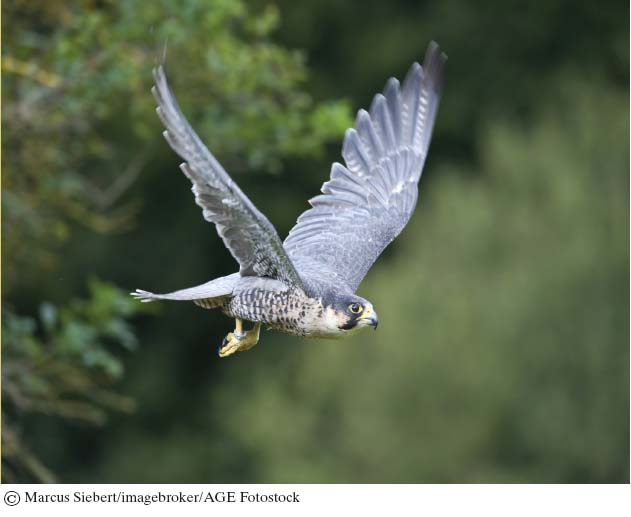CHAPTER 5
Integration
5.2 Accumulated Change and Area Under a Curve
5.4 The Fundamental Theorem of Calculus
5.6 Integration by Parts and Partial Fractions
Figure 5.1 The peregrine falcon (Falco peregrinus) feeds primarily on pigeons, doves, mice, and shorebirds.

Preview
“Nature laughs at the difficulties of integration.”
Pierre-Simon de Laplace (1749–1827)
Calculus has two parts—differential calculus, the topic of the previous chapters, and integral calculus. At the core of differential calculus is the concept of the instantaneous rate of change of a function. We have seen how this concept can be used to locally approximate functions and to identify maxima and minima. Integral calculus, on the other hand, deals with accumulated change and, thereby, recovering a function from a mathematical description of its instantaneous rate of change. This recovery process, interestingly enough, is related to the concept of finding the area under a curve.
Using integral calculus, we can calculate the velocity of a stooping peregrine falcon (see Figure 5.1) as it dives toward Earth at great speed to catch prey; calculate the blossom date of a tree as a function of anticipated temperature patterns, so that an orchard can be stocked with bees ...
Get Calculus for Life Sciences now with the O’Reilly learning platform.
O’Reilly members experience books, live events, courses curated by job role, and more from O’Reilly and nearly 200 top publishers.

